
African American Police League Archives
Inspired by the Chicago premiere of Jeanine Tesori and Tazewell Thompson's opera Blue, Lyric has created a slate of public programs geared toward engaging audiences on topics addressed in the opera.
In collaboration with the Chicago History Museum, Lyric is presenting curated selections from the African American Police League archives. We invite you to scroll down to learn more about the groundbreaking efforts of this organization, and the impact it had on the evolving relationship between Chicago's Black communities and the Chicago Police Department.
Items that contain extensive text have been transcribed to improve readability.
Please note this content engages with topics that may be sensitive or triggering, including racism, racial slurs, violence and mental illness.
About the archives
Written by Julius Jones, assistant curator at the Chicago History Museum
In the aftermath of the assassination of Dr. Martin Luther King Jr. on April 4, 1968, people in Chicago and several cities across the United States responded with an explosion of unrest and despair, in which businesses were looted, buildings burned, and lives lost. Chicago mayor Richard J. Daley issued a “shoot-to-kill” order to the Chicago Police Department (CPD) for anyone found to be participating in the destruction of property. Daley later claimed that his remarks had been taken out of context, but the damage was done―not just in Chicago’s African American community, but among Black members of the CPD. The deteriorating relationship between law enforcement and African American citizens led CPD officers Edward “Buzz” Palmer, Renault Robinson, Curtis Cowsen, Willie Ware, Wilbur Crooks, and Jack Debonnett and a civilian, Tom Mitchell, to establish the Afro-American Patrolmen’s League (AAPL) in September of that year.
Almost immediately after the AAPL’s founding, its members were targeted for abuse and retribution. Palmer was ultimately forced out of the department due to increased harassment, and Robinson, who became the league’s first executive director, was suspended nearly one hundred times on dubious and false misconduct charges. Other early leaders of the AAPL, such as Patricia Hill and Howard Saffold, were targeted with abuse as well. In 1970, citing Robinson’s experiences, the AAPL successfully sued the CPD for its racially discriminatory practices, a case that was ultimately decided by the US Supreme Court. As a result, the percentage of African American police officers in Chicago reached parity with the city’s population.
The AAPL also worked to improve the quality of policing in Chicago’s African American neighborhoods by documenting and investigating complaints of police brutality on behalf of community members. The league conducted training workshops open to all members of the police department on how to enforce the law with sensitivity and without bias. Finally, the AAPL served as pioneers in implementing community policing practices, establishing numerous community-based initiatives and partnering with neighborhood organizations.
The collection, housed at the Chicago History Museum, contains annual reports, court files, fundraising items, reports, correspondence, newsletters, police brutality report files, and publications and flyers relative to the ongoing work of the Afro-American Patrolmen’s League (which was renamed the Afro-American Police League in 1979 and later, the African American Police League) and its education and action arm, the League to Improve the Community (LIC). Access to the collection is available through the CHM Research Center.

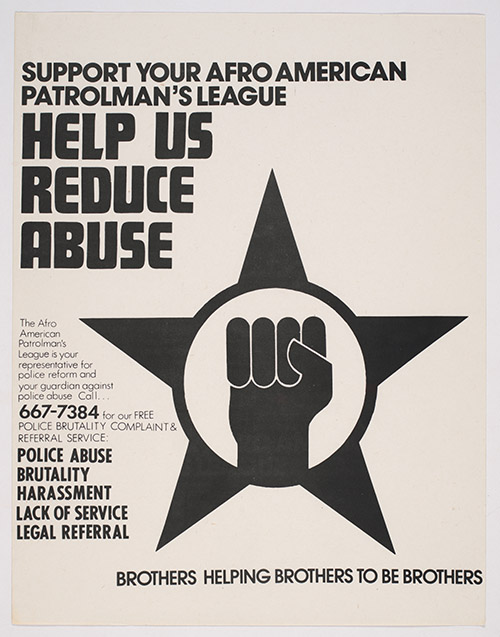
The AAPL was conceived with a dual mandate, as evidenced by these two flyers. The one on the left informs Black police officers that the AAPL is a resource for them and invites them to join the organization. The flyer on the right asks the community to help the AAPL fight policy brutality by reporting any instances of police misconduct to them. Chicago History Museum, ICHi-178177; ICHi-178178.

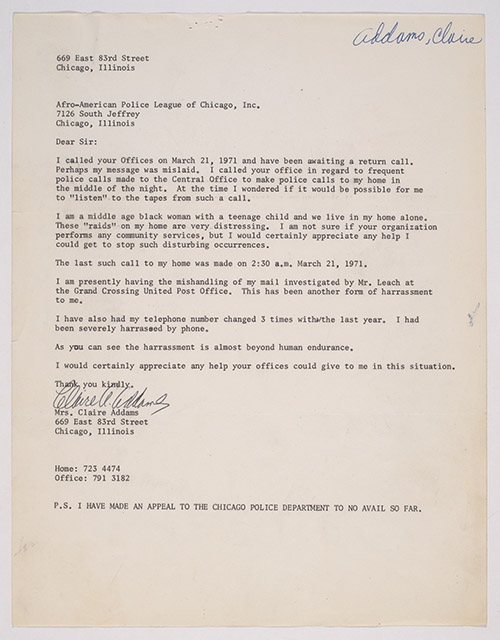
The AAPL became known within Chicago’s Black community as a resource for addressing issues of police misconduct. In this letter, a Mrs. Claire Addams asks for help dealing with harassment she and her family endured from police. Chicago History Museum, ICHi-178175; ICHi-178174; ICHi-178173.
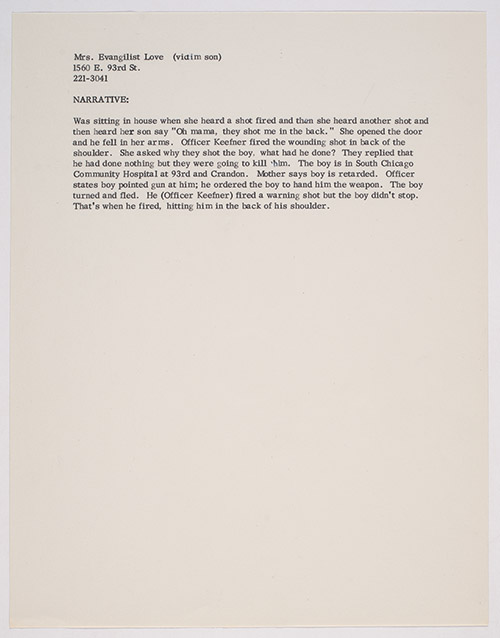
The AAPL would fill the void when authorities failed to investigate allegations of police misconduct or violence. This report filed with the AAPL details an incident of a young boy with a mental disability who was allegedly shot by police in his back shoulder. Chicago History Museum, ICHi-178169.
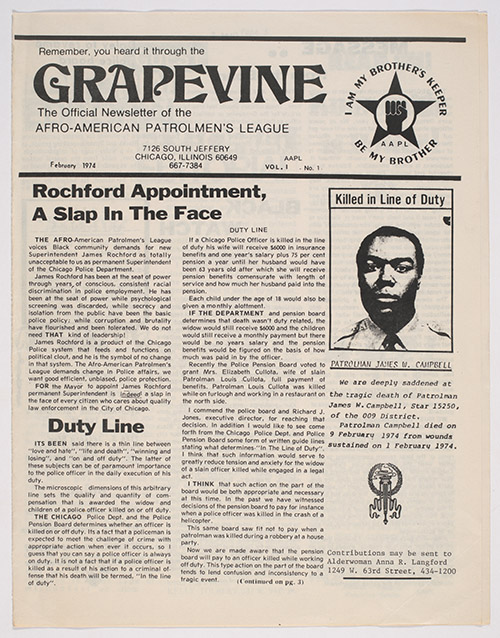
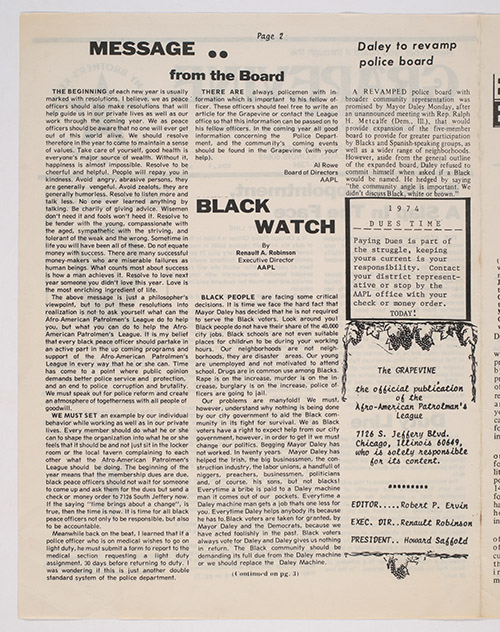
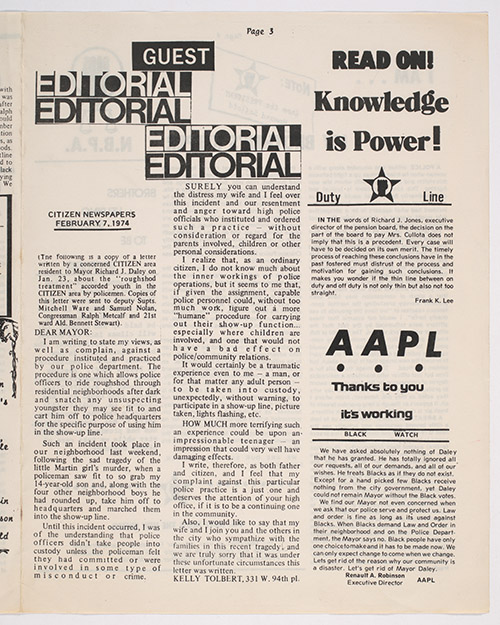
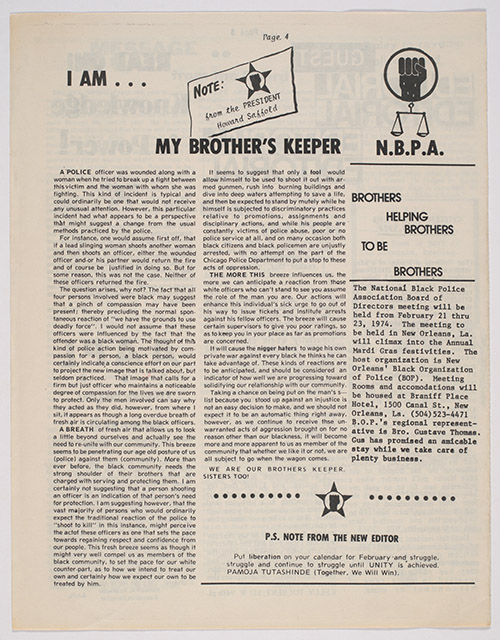
The Grapevine was the AAPL’s official newsletter. Published monthly, the periodical informed dues-paying members of the organization’s activities and positions, such as this first issue calling for the replacement of Chicago mayor Richard J. Daley. Chicago History Museum, ICHi-178165; ICHi-178166; ICHi-178167; ICHi-178168.

Another report to the AAPL details the failure of white members of the Chicago Police Department to protect a Black family from racial harassment and violence. Chicago History Museum, ICHi-178170.
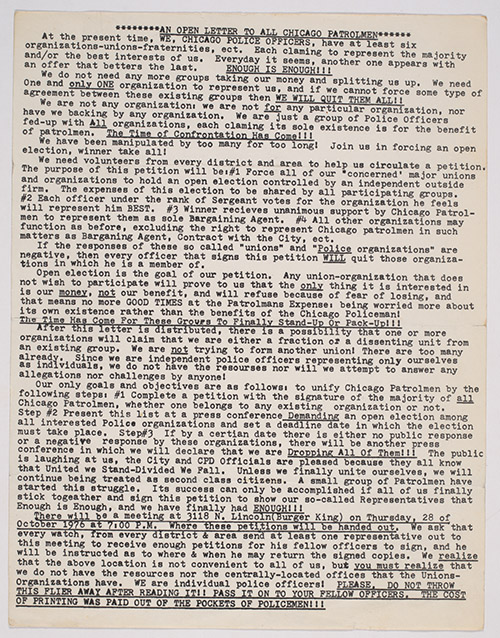
Although there already existed at least six organizations representing Chicago police officers, the most prominent being the Fraternal Order of Police, many Black police officers who joined the AAPL believed that those organizations failed to protect them from racial discrimination and harassment within the department. Chicago History Museum, ICHi-178158.
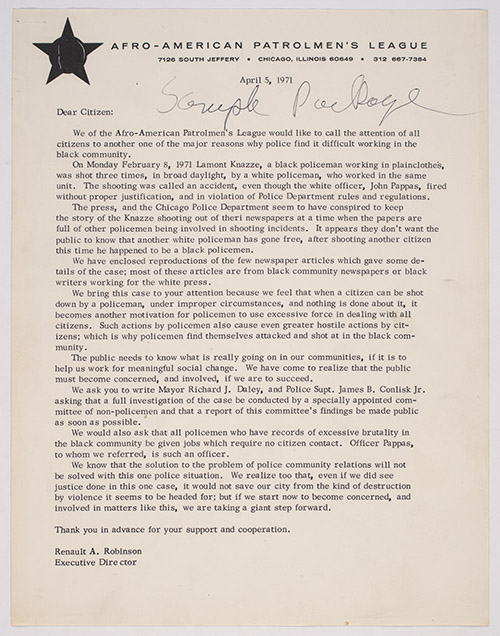
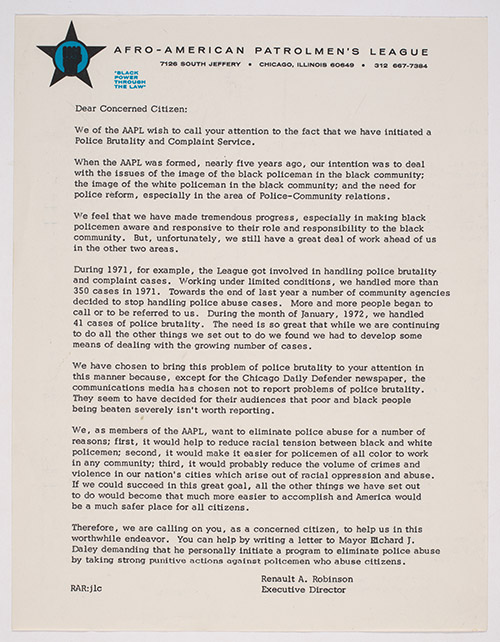
Financial support from Chicago’s African American community was a small but vital source of funding for the AAPL. The league went to great lengths to follow up on the reports of police misconduct that it received and to respond, building a significant mailing list. The AAPL would then send out solicitations such as the ones above, asking for financial support from the community. Chicago History Museum, ICHi-178159; ICHi-178160.
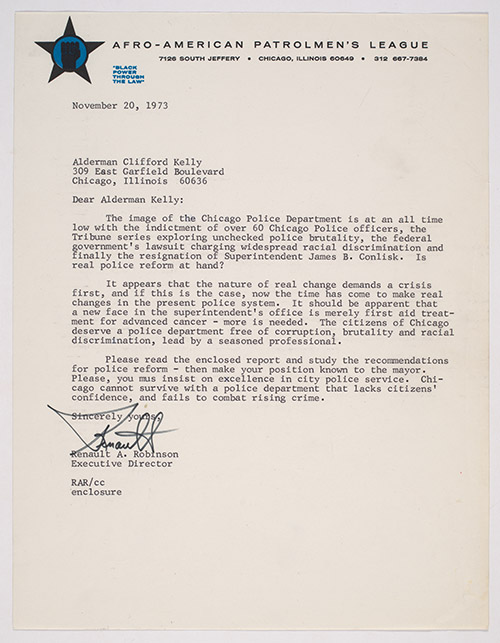
During the early 1970s, several incidents of misconduct among Chicago police officers became major news stories in the city and throughout the United States. This letter from the AAPL to then-Alderman Clifford Kelly, which asks if “real police reform is at hand,” was sent with an enclosed report of recommendations on how to create a just and equitable police department. Chicago History Museum, ICHi-178162.
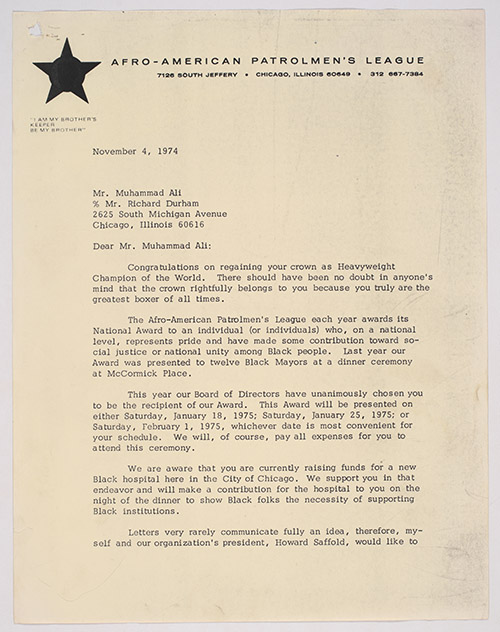
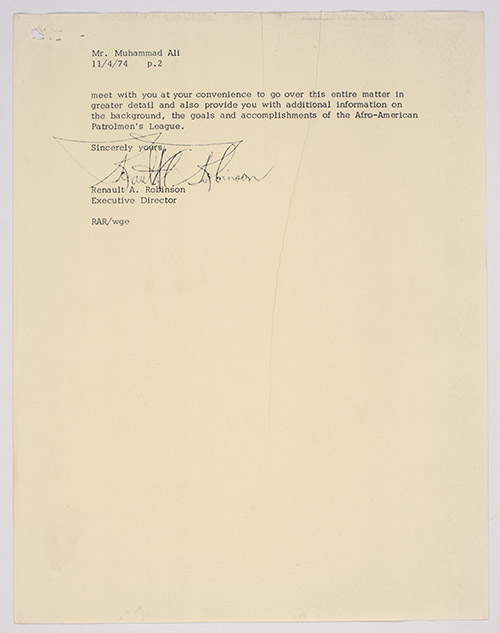
This letter was written by the AAPL to inform boxer Muhammad Ali that he was the winner of their National Award and invited him to a ceremony in his honor. The award benefit would have been a fundraiser for the AAPL and a Black hospital for which Ali was raising funds. Although there is no evidence of the AAPL receiving a response from Ali, the organization did host a benefit with him in 1977. Chicago History Museum, ICHi-178163; ICHi-178164.

The AAPL saw policing the police as a part of its role. In this letter to Chicago Police Board president Merlin Johnson, the AAPL claims that 5 percent of the police force is “psychologically maladjusted” to police work due to the large number of brutality complaints leveled against them. Chicago History Museum, ICHi-178161.
Blue public programs are made possible with support from
Dr. Scholl Foundation
Blue is made possible by support from
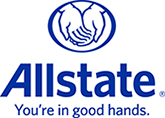

A co-production of The Glimmerglass Festival, Washington National Opera and Lyric Opera of Chicago.
Lyric Unlimited - Learning & Civic Engagement Sponsors
Anonymous Donor
Nancy W. Knowles Student and Family Performances Fund
Dr. Scholl Foundation


Walter Family Foundation
The Richard P. & Susan Kiphart Family
Shure Charitable Trust


Eisen Family Foundation
Robert and Evelyn McCullen
Marsha Serlin and Jerry Sloan
Charles and M.R. Shapiro Foundation, Inc.
Terry J. Medhurst
Mazza Foundation

Buehler Family Foundation
Wintrust Community Banks
Helen Brach Foundation
The Siragusa Family Foundation
Polk Bros. Foundation
Lloyd A. Fry Foundation
Raynette and Ned Boshell
John and Rosemary Brown Family Foundation
John Hart and Carol Prins
The Simon Family Foundation